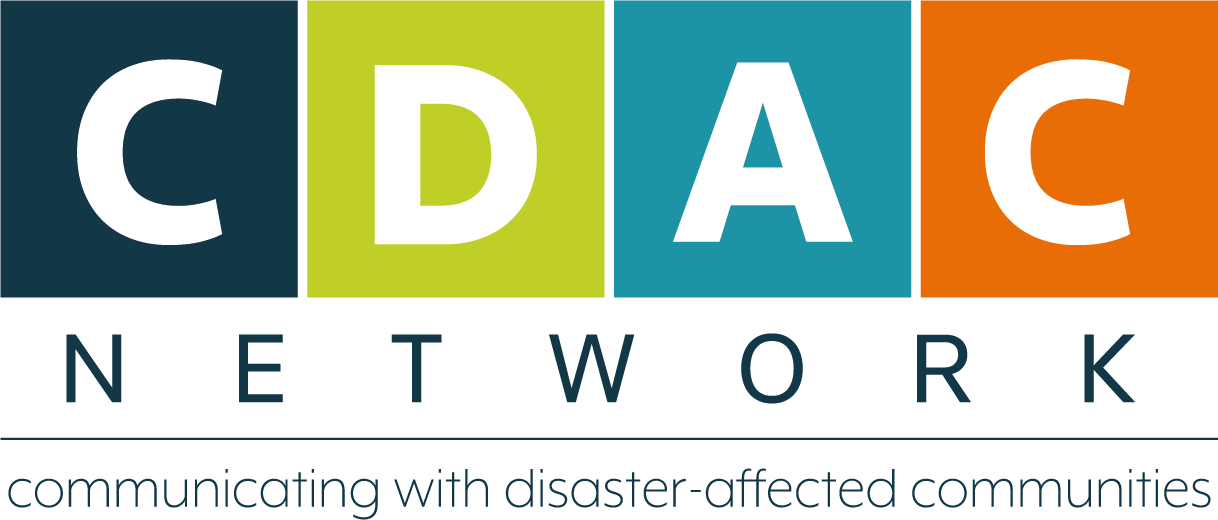WATCH | The inclusion rebellion: winning the communication battle
As the Ukraine–Russia conflict unfolds online like no other war to date, it urges us to reassess what we think we know about the humanitarian communication landscape.
On 11 May 2022, at OCHA’s Humanitarian Networks and Partnerships Weeks (HNPW), CDAC Network hosted a session to challenge assumptions on how misinformation proliferates. With our panellists, we explored how we can move away from a ‘one size fits all’ response to the info-crisis towards solutions that are inclusive and tailored.
Watch the event recording above or on our YouTube channel.
Our panel:
Loretta Hieber Girardet (moderator), United Nations Office for Disaster Risk Reduction
Dylan Winder, UK Mission in Geneva and UK Foreign, Commonwealth and Development Office
Dr. Wunpini F. Mohammed, College of Journalism & Mass Communication, University of Georgia
Sudhanshu Shekar Singh, Humanitarian Aid International
Jessica Alexander, The New Humanitarian
Key points from our panellists are captured in our Twitter thread:
"With the pandemic, we saw the rise of an ‘infodemic’. The chaotic scramble for information led to conditions ripe for misleading or deceptive information. Humanitarians struggled to adapt their communication operations to this social media environment" - @LoriHG_UN#CommIsAid pic.twitter.com/NFMmlktnCC
— CDAC Network (@CDACN) May 11, 2022
"Fundamentally, information is at the heart of humanitarian response...Ukraine is an existential moment for us. How do we provide the right information when situation is changing rapdily? Ukraine is highly digitalised society - are we making enough of digital?" - @DylanWinderFCO pic.twitter.com/PzIxMkZypZ
— CDAC Network (@CDACN) May 11, 2022
.@Jessalex811 on lessons learned for Ukraine from 2015 European refugee crisis: humanitarians not using the same channels as highly digitally connected populations - "the humaniatarian sector needs to plug itself into digital conversations happening on the ground"#CommIsAid
— CDAC Network (@CDACN) May 11, 2022
"In Ukraine, they're not waiting for us to set up communication channels & platforms - they're meeting that urgent need themselves. Raises the question, should we actually support more refugees to start up their own comms channels?" - @LoriHG_UN #CommIsAid
— CDAC Network (@CDACN) May 11, 2022
The fog of misinformation can be used to dehumanise & erase marginalised groups - "Even though many African students fleeing the Ukraine-Russia crisis tried to share videos of how they were treated at the border, they were often dismissed as 'fake news'" - @wunpini_fm #CommIsAid
— CDAC Network (@CDACN) May 11, 2022
.@wunpini_fm comparing Covid-19 response in Ghana & US: "In Ghana we had strong frameworks for development communication, so we could tap into those. The US didn't have those structures, and it led to health information beoming heavily politicised and at risk of misinformation"
— CDAC Network (@CDACN) May 11, 2022
.@sssingh21 challenges international actors to go much further on localisation agenda: "How will you communicate with & gain trust of affected populations & marginalised groups if you don't have strong, equal partnerships with local actors on the ground?"#CommIsAid #HNPW2022
— CDAC Network (@CDACN) May 11, 2022
"AAP has sometimes become a bit of a tick box exercise - instead, it needs to be linked into the wider issue of empowerment and shifting decision-making power to affected people" - @DylanWinderFCO #CommIsAid #HNPW2022
— CDAC Network (@CDACN) May 11, 2022
During the event, we asked our audience: ‘What are the key challenges that humanitarians face in the new communication and information landscape?’
This word cloud captures their answers, with some of the most popular being:
Clarity of mission
Lack of understanding
Fear of sharing
The hybrid event took place in Geneva and online, and also featured a video intervention from Emily Dwyer, founder and co-director of the Edge Effect. Emily’s intervention (below) challenged humanitarian organisations to go much further in including LGBTIQ communities in countering harmful rumours and designing communication and community engagement programmes.
To hear about future CDAC Network events, follow us on Twitter @CDACN and LinkedIn and subscribe to our newsletter.

